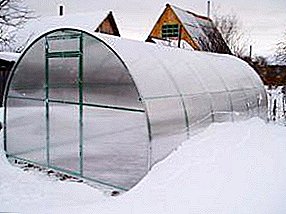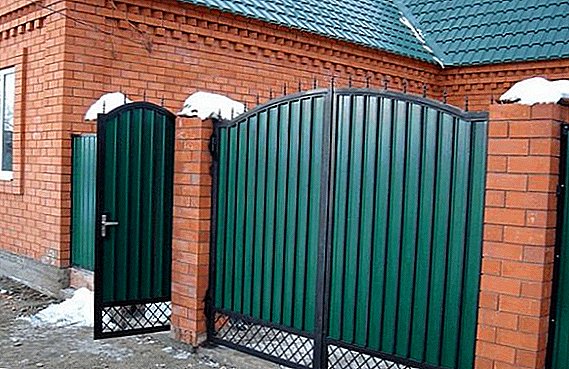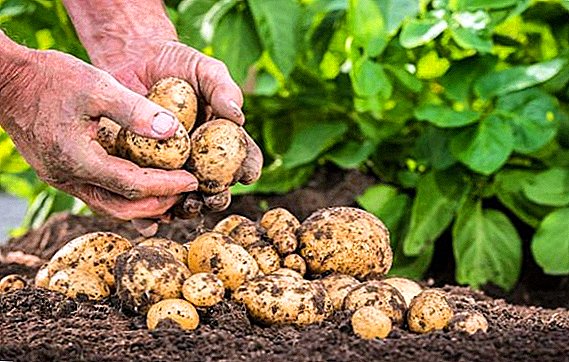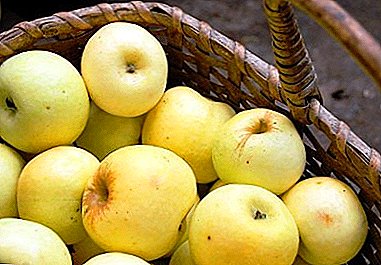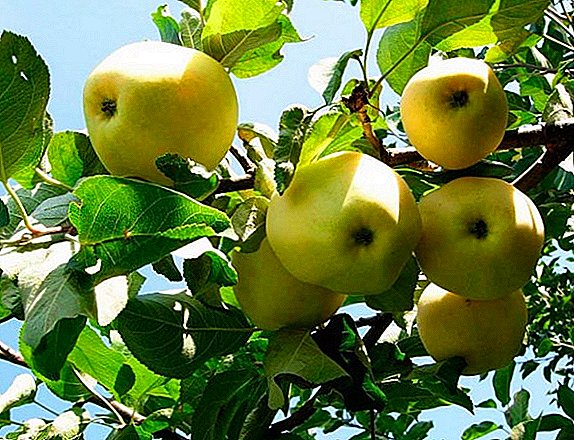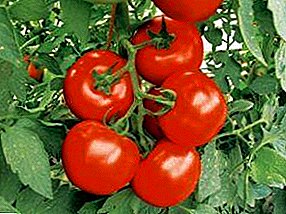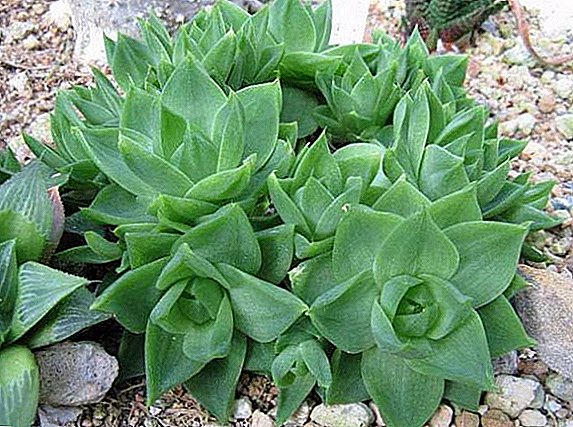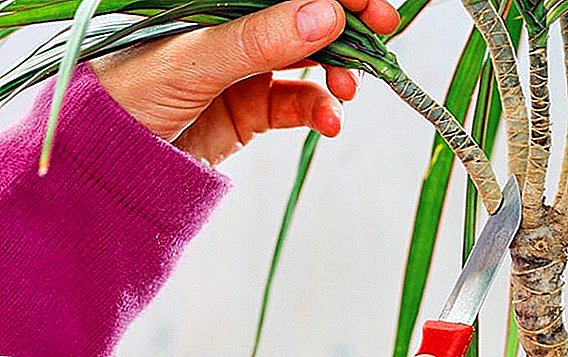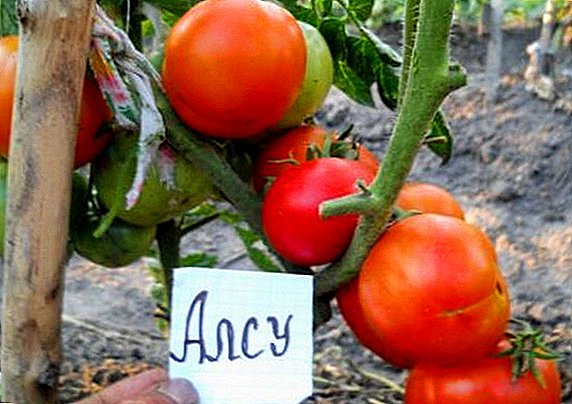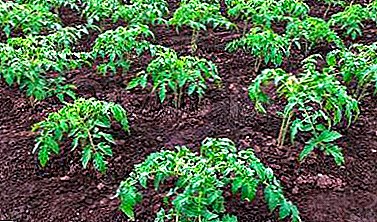
Tomatoes or tomatoes - one of the most common crops grown on plots.
Tomatoes are very demanding to the land in which they are grown, so special attention should be paid to preparing the soil for planting tomatoes.
Only by properly preparing the land for planting a crop can you count on good plant growth and a rich harvest.
The value of soil for tomatoes
Thereby the ground part of the plant gets the most moisture and nutrients necessary for active growth and the formation of fruits.
Given this feature, it is possible to determine the soil characteristics necessary for a given crop:
- moisture capacity and water permeability, as the roots do not tolerate excessive moisture;
- softness and friability, it is necessary to create a favorable level of soil moisture, as well as to facilitate the growth and development of the root system;
- the soil must be nutritious;
- heat capacity and permeability are also extremely important.
 If the soil for the tomatoes is not properly prepared, then the plants will yield a smaller crop.. In the process of growing tomatoes by their appearance, you can determine whether they have enough minerals and whether their soil quality suits them.
If the soil for the tomatoes is not properly prepared, then the plants will yield a smaller crop.. In the process of growing tomatoes by their appearance, you can determine whether they have enough minerals and whether their soil quality suits them.
- With a lack of nitrogen in the soil, shoots become thin, weak, the leaves become small and become pale green in color.
- With a lack of phosphorus leaves become red-purple color, stops the active growth of plants.
- A shortage of potassium can be seen by finding a bronze-colored border on the leaves.
- If the soil is acidic and the plants lack calcium, then the plants do not grow, the tops turn black and rot, and few fruits are formed.
Advantages and disadvantages of homemade soil
Despite the fact that tomatoes whimsical to the ground, the soil for them can be prepared with their own hands, by analyzing the soil present at the site and selecting the necessary biomaterial for the correction of the soil composition.
The advantages in this case are obvious:
- Cost savings. Separately acquired mineral dressings, fertilizers and other materials will cost less than the purchased soil for filling the site for tomatoes.
- Individual approach. To correct the soil on your site, you will use exactly what is needed in the area, which will give the best result compared to the universal soil.
In order to prepare the soil for tomatoes on their own, it is necessary to analyze the available soil and growing conditions. Very much depends on the choice of site for planting future plants.
- The place for planting should be changed annually, returning the tomatoes to the same place no earlier than 3 years later.
- Good soil for tomatoes is:
- loam with a high content of organic fertilizers;
- chernozem with small admixtures of sand.
- Not suitable for tomatoes:
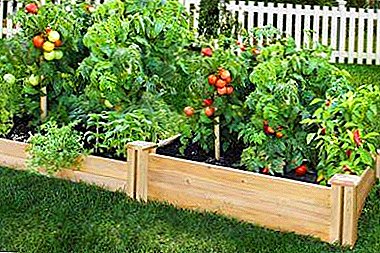 peatlands;
peatlands;- clay soils;
- poor sandy loam.
- Bad precursors for tomatoes are plants from the family of the nightshade. It is best to grow vegetables such as:
- carrot;
- bow;
- cabbage;
- legumes;
- pumpkin family vegetables.
Tomatoes should not be planted next to potatoes, since both cultures are prone to the Colorado potato beetle and phytophthora.
Interestingly, the tomatoes are beautifully side by side with strawberries. Such a neighborhood greatly improves the quality of the harvest of both crops.
- The site should be well lit.
- The soil should be cleaned from solid debris, weed seeds, as well as dense lumps of soil.
- An important factor is the acidity of the soil. The average acidity is 5.5 points. For tomatoes, a deviation from the average to 6.7 points is considered acceptable.
Soil acidity can be checked by analyzing the weeds growing in the area. Plantain, horsetail and horse sorrel - a sign that the soil is too acidic.
About what should be the soil for tomatoes and how it should have acidity, read here.
Land composition for planting
Depending on the initial composition of the soil, appropriate additives are added to improve the quality of the soil.
- Sandy ground:
- organic matter (compost or humus) in the amount of 4-6 kg per 1 square meter;
- lowland peat 4-5 kg per 1 square meter;
- sod soil 1 to 1.
- Average loam:
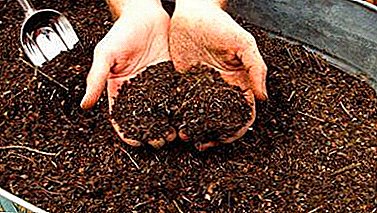 lowland peat 2-3 kg per 1 square meter;
lowland peat 2-3 kg per 1 square meter;- lime (if necessary, since lowland peat changes the acidity of the soil).
- Clay:
- high-moor peat of 2-3 kg per 1 sq. m is brought along with hydrated lime;
- coarse sand 80-100 kg per 1 square meter;
- compost 1 to 1;
- sand sapropel 1 to 2.
- All soil types. Sand sapropel 1 to 2.
Primary preparation: disinfection
Consider how to prepare the soil for planting tomatoes.
Methods of soil disinfection:
- Freezing. The soil is placed in a fabric bag and taken out into the cold for a week. It is then placed in heat for a week to awaken microorganisms and weeds. Then again it is taken out in the cold in order to destroy them.
- Heat treatment.
- Calcination. Pour boiling water on the ground, mix, put on a baking sheet and heat to 90 degrees. Heat for half an hour.
- Steaming. The water in the large basin is brought to a boil, a grate is placed on top with the earth wrapped in cloth. Steaming is necessary for 1.5 hours.
Heat treatment should be carried out with caution, as it is possible to degrade the quality of the soil, exceeding the required temperature or time. In addition, after such a treatment, the soil becomes unsuitable for growing crops, it is required to populate it with useful microflora.
- Fungicide treatment. Fungicides are bacterial cultures that suppress disease-causing infections and strengthen plant immunity. It is necessary to carry out the treatment strictly according to the instructions of the selected drug. Today there are several of them on the market.
- Insecticide use. This group of drugs is designed to kill pests. It is necessary to process these drugs no earlier than a month before planting the plants.
- Disinfection with potassium permanganate. An effective way to disinfect the soil, but increases its acidity. Dilution: 3-5 g per 10 liters of water; watering: 30-50 ml per 1 sq.m.
About how to make a ground for seedlings of tomatoes, we wrote in a separate article.
Using a simple garden land: how to prepare and process?
 After the place for tomatoes is chosen, it is necessary to prepare a site for planting. The land is recommended to be treated twice a year:
After the place for tomatoes is chosen, it is necessary to prepare a site for planting. The land is recommended to be treated twice a year:
- In autumn they dig up the earth in order to destroy the weeds. Poor soil should be fertilized with organic fertilizers (humus at the rate of 5 kg per 1 square meter). You can also add mineral fertilizers (50 g of superphosphate or 25 g of potassium salt per 1 sq. M.).
- In the spring the plot is treated in order to prepare the land for planting. Bird droppings at the rate of 1 kg per 1 square meter, wood ash in the same proportion, and ammonium sulfate are used as fertilizers (25 g are used per 1 square meter).
Fertilizers must be applied at least 4 weeks before planting so that minerals are evenly distributed in the soil.
- Increased acidity of the soil is adjusted by adding lime in the amount of 500-800 g per square meter.
Experienced gardeners do not recommend using fresh manure for tomatoes, as in this case the plants will increase the green mass to the detriment of the formation of ovaries.
The tomato beds begin cooking at the end of May:
- Small trenches are formed in the direction from north to south. The distance between the rows is 70 cm, between the beds from 1 meter.
- For each bed it is necessary to make the sides about 5 cm tall. Such a system prevents the spreading of water during irrigation.
- Now you can plant tomato seedlings in open ground.
Tomatoes - everyone's favorite vegetable on the summer and winter tables. Although he is demanding to care, if you approach the issue of growing tomatoes with the knowledge of the subject and with love for the land, the harvest will make you happy!


 peatlands;
peatlands; lowland peat 2-3 kg per 1 square meter;
lowland peat 2-3 kg per 1 square meter;